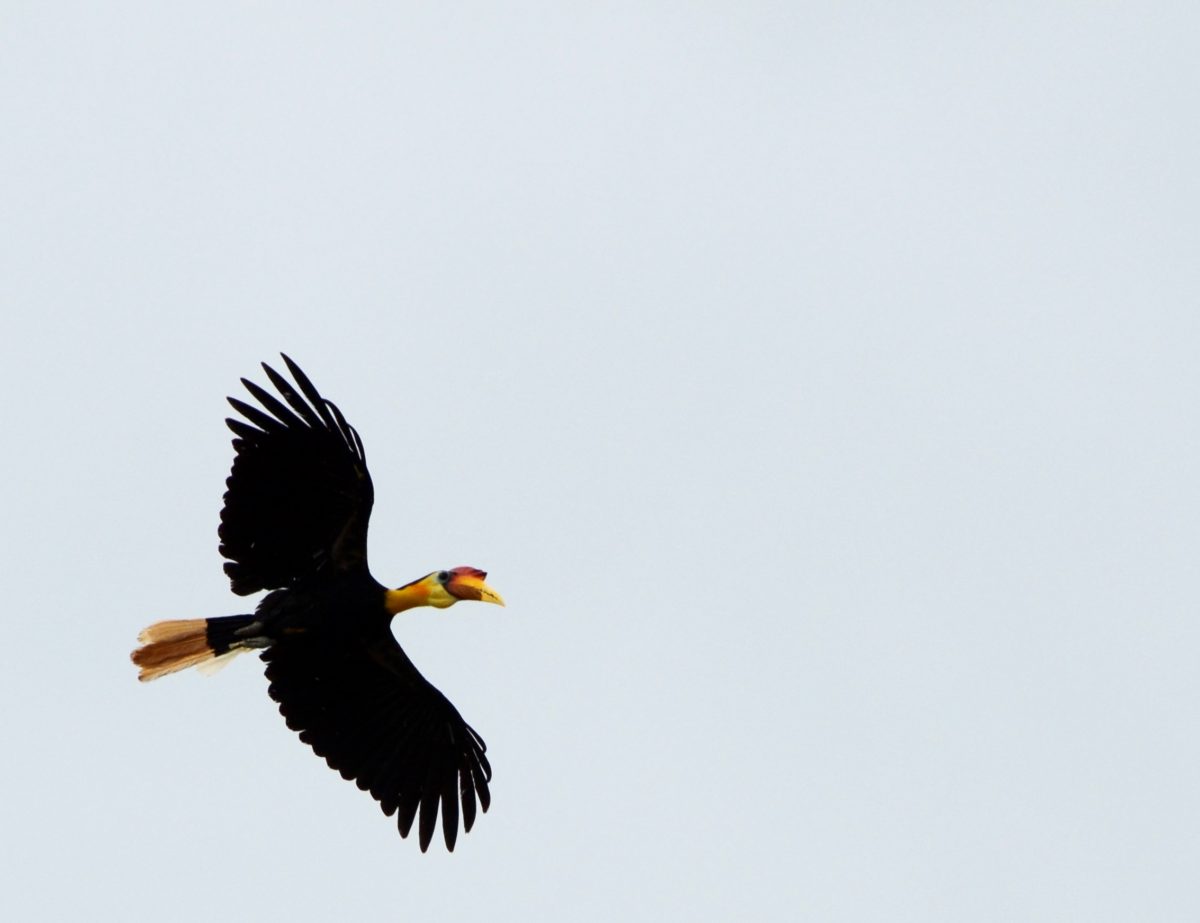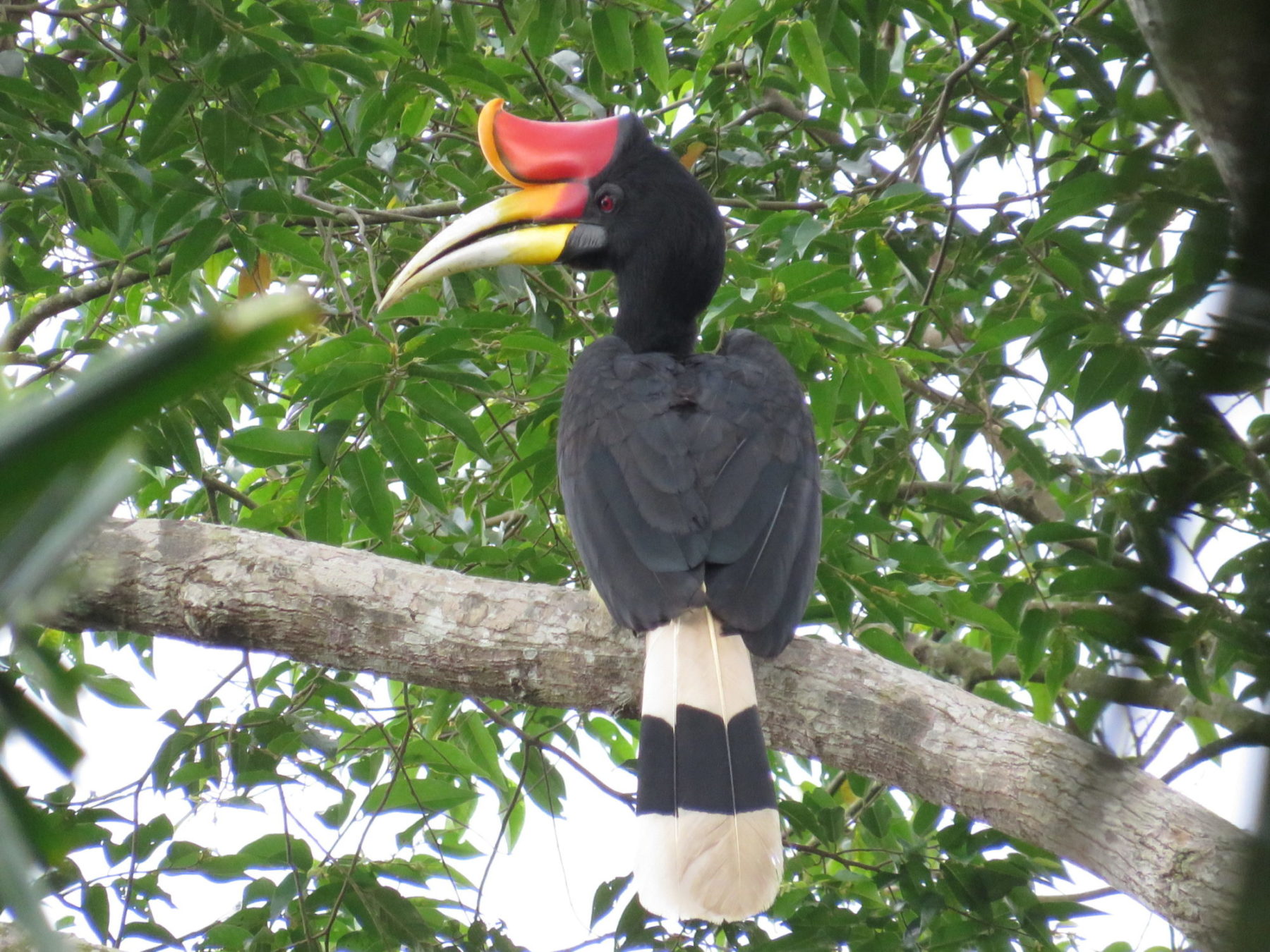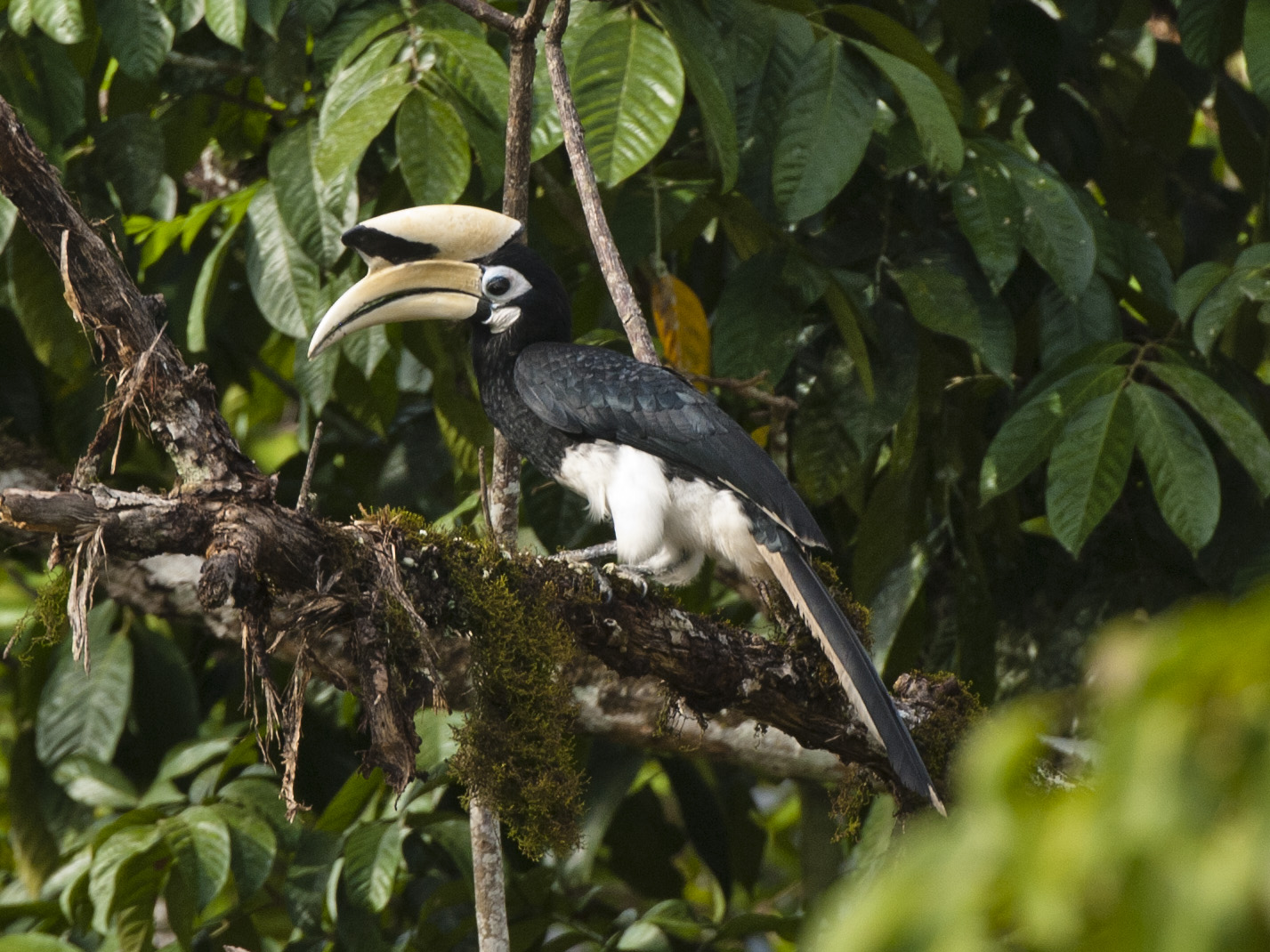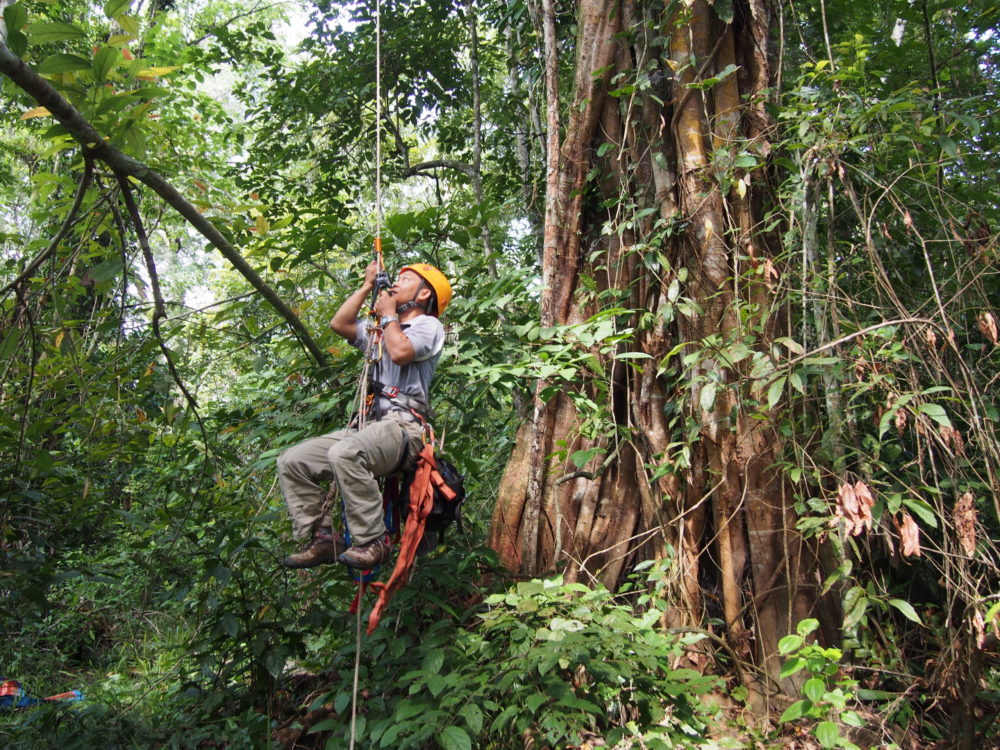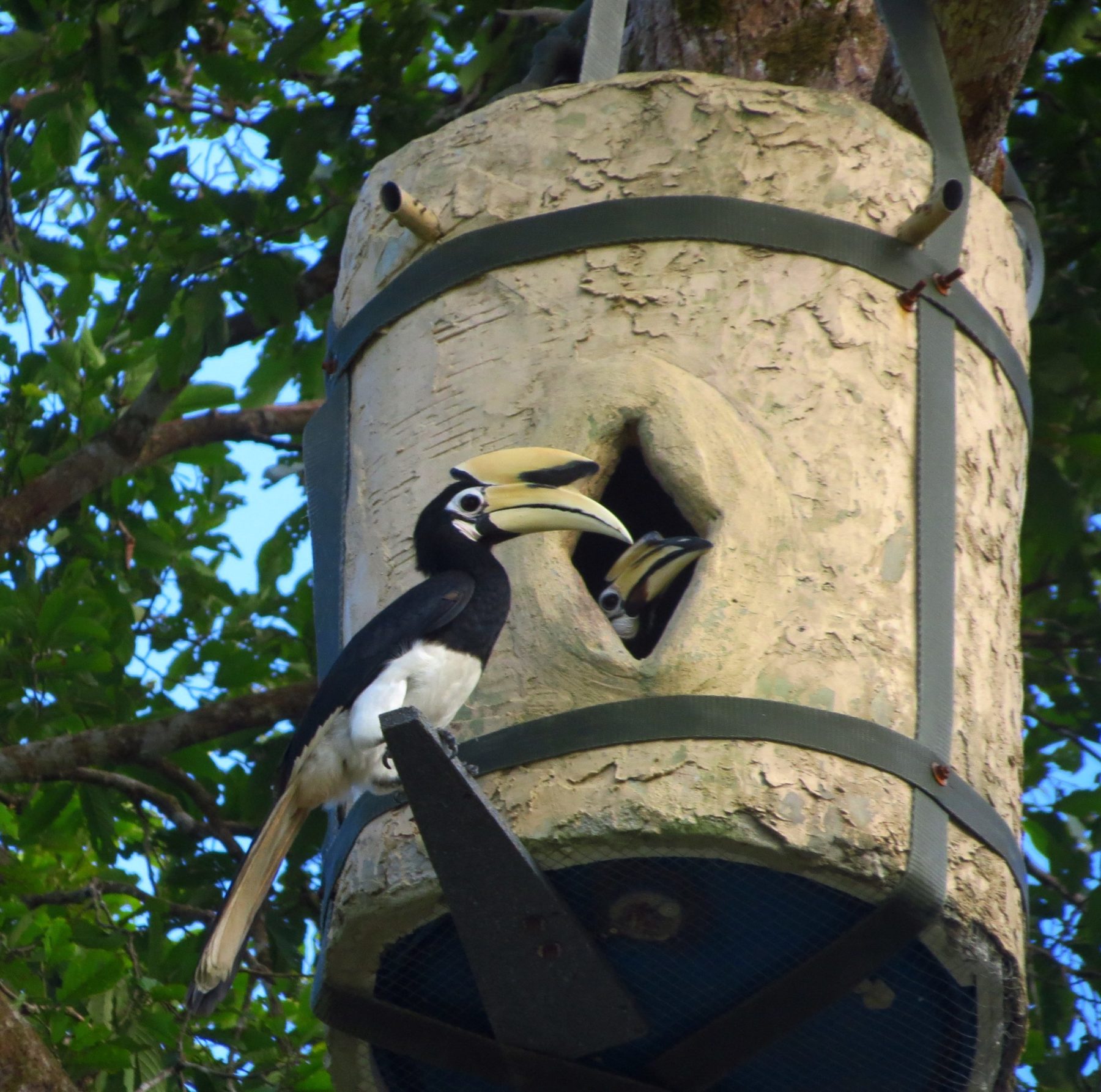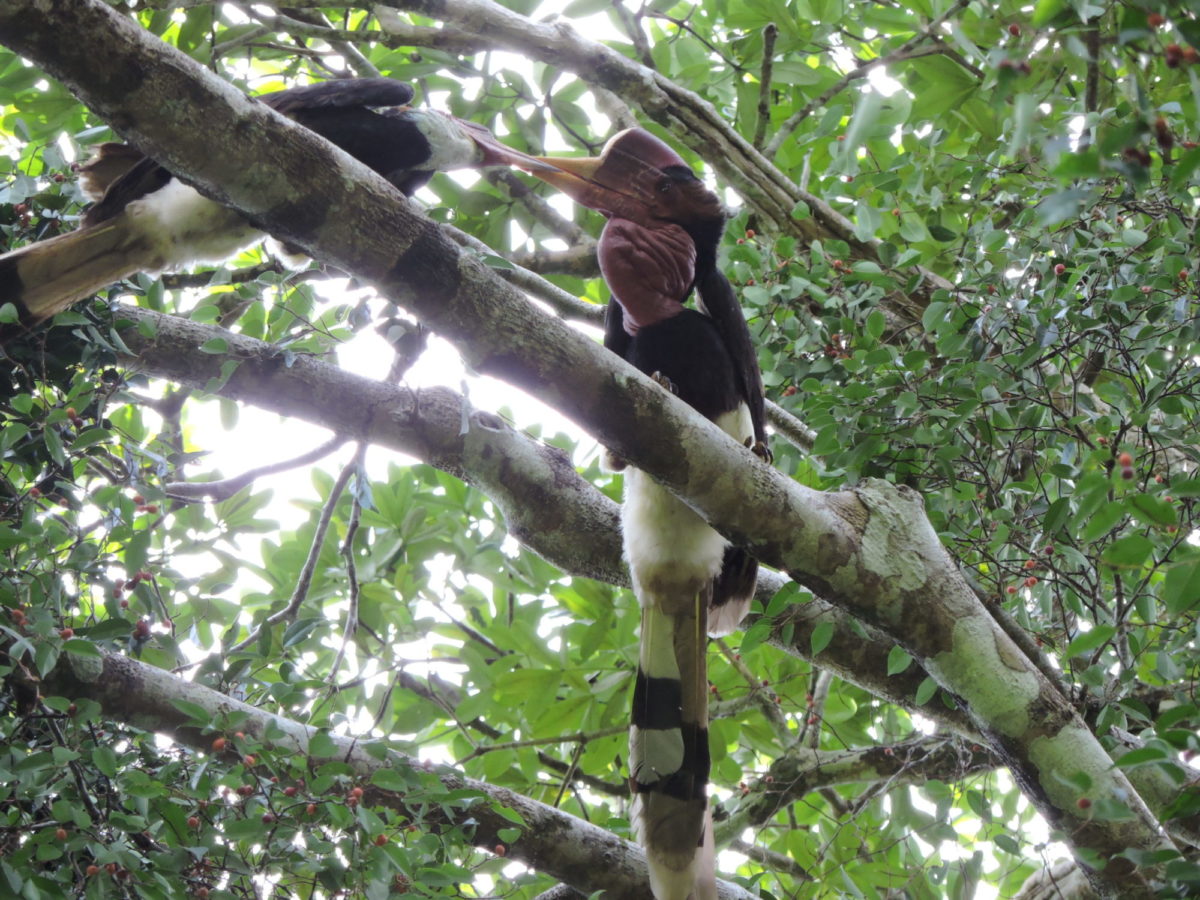We support hornbill breeding activities in the Kinabatangan to ensure that these magnificent birds will survive in the area.
Eight species of hornbills occur in Borneo: they are all found in the Kinabatangan.
SPECIES
Rhinoceros Hornbill - RH
Helmeted Hornbill - HH
Black Hornbill -BH
Oriental Pied Hornbill - OPH
Bushy-crested Hornbill - BH
Wreathed Hornbill - WEH
White-crowned Hornbill - WIH
Wrinkled Hornbill - WRH
SCIENTIFIC NAME
Buceros rhinoceros
Rhinoplax vigil
Anthracoceros malayanus
Anthracoceros albirostris albirostris
Anorrhinus galeritus
Aceros undulatus
Aceros comatus
Rhabdotorrhinus corrugatus
IUCN STATUS
Near threatened
Critically endangered
Near threatened
Least concern
Least concern
Least concern
Near threatened
Critically endangered
Asian hornbills nest in natural cavities located in living trees. These birds are unable to excavate their own nest cavity and they depend on naturally-formed cavities for breeding. Large hornbill species need large cavities that are only found in large, mature trees. However, the past extensive logging activities have removed or killed most of the large trees in the Kinabatangan area. As a result, the birds who are living in the floodplain now face severe challenges, due to the lack of suitable breeding sites.
In 2013, HUTAN decided to install artificial nests for hornbills in the forests of Kinabatangan. With the assistance of several zoo partners, we have erected more than 20 artificial nests over the past few years. Our monitoring shows that it will take a few years before the birds start using the artificial nest boxes. Our data also indicate that the birds may prefer artificial nests made with plastic drums rather than wood. Over the past three years, three artificial nest boxes have been used successfully by rhinoceros (5 times) and bushy crested (1 time) hornbills.
Two local researchers are working full-time on hornbill protection and monitoring. Their activities are supervised and supported by both HUTAN and GAIA, a Malaysian NGO run by Ravinder Kaur and Sanjitpaal Singh. The research team is monitoring the breeding status of various species in Kinabatangan, including a natural nest that is regularly used by a couple of helmeted hornbills. This species is increasingly rare because of the trade for its cask, also called “red ivory”. Ravinder just completed her PhD thesis studying hornbill breeding ecology in Kinabatangan.

